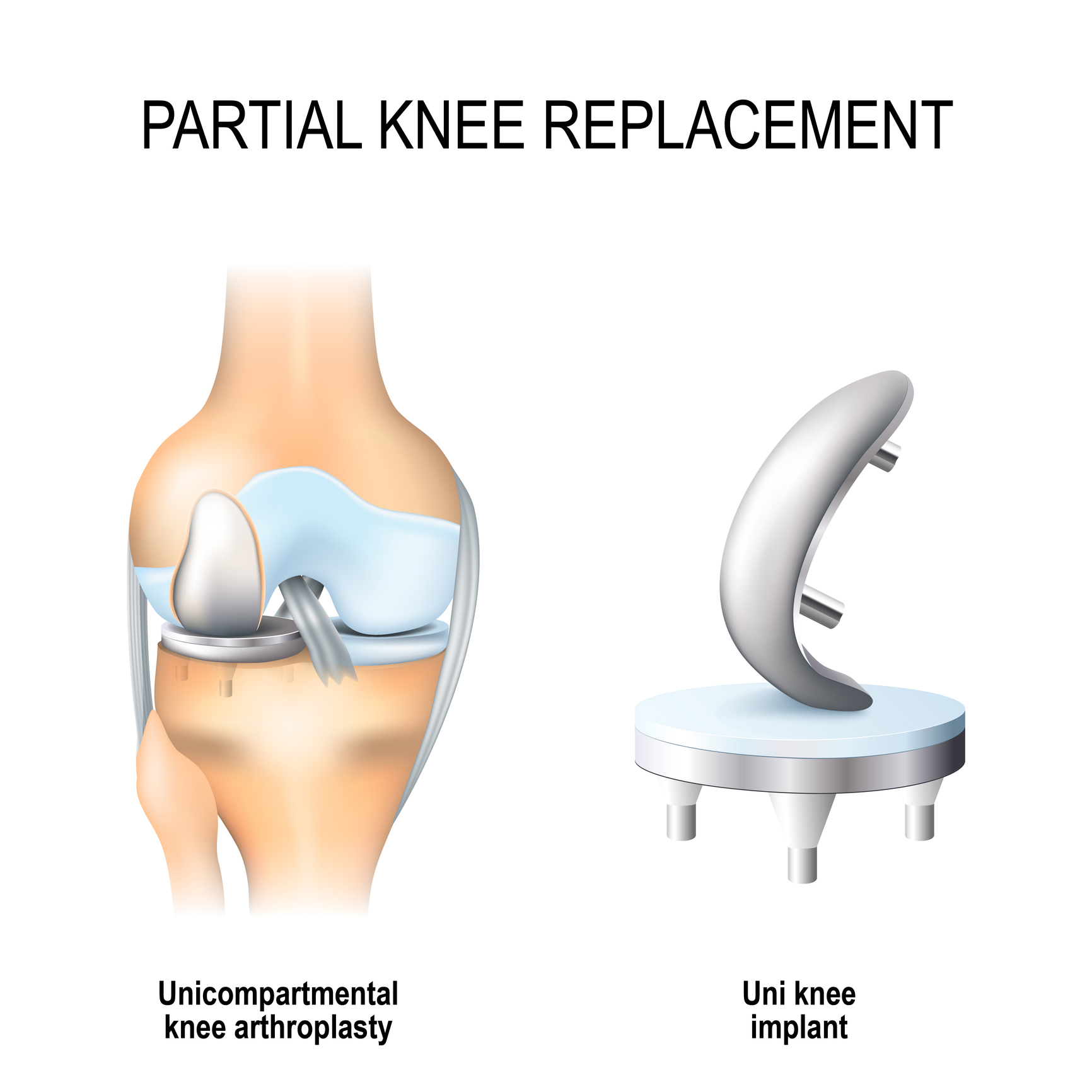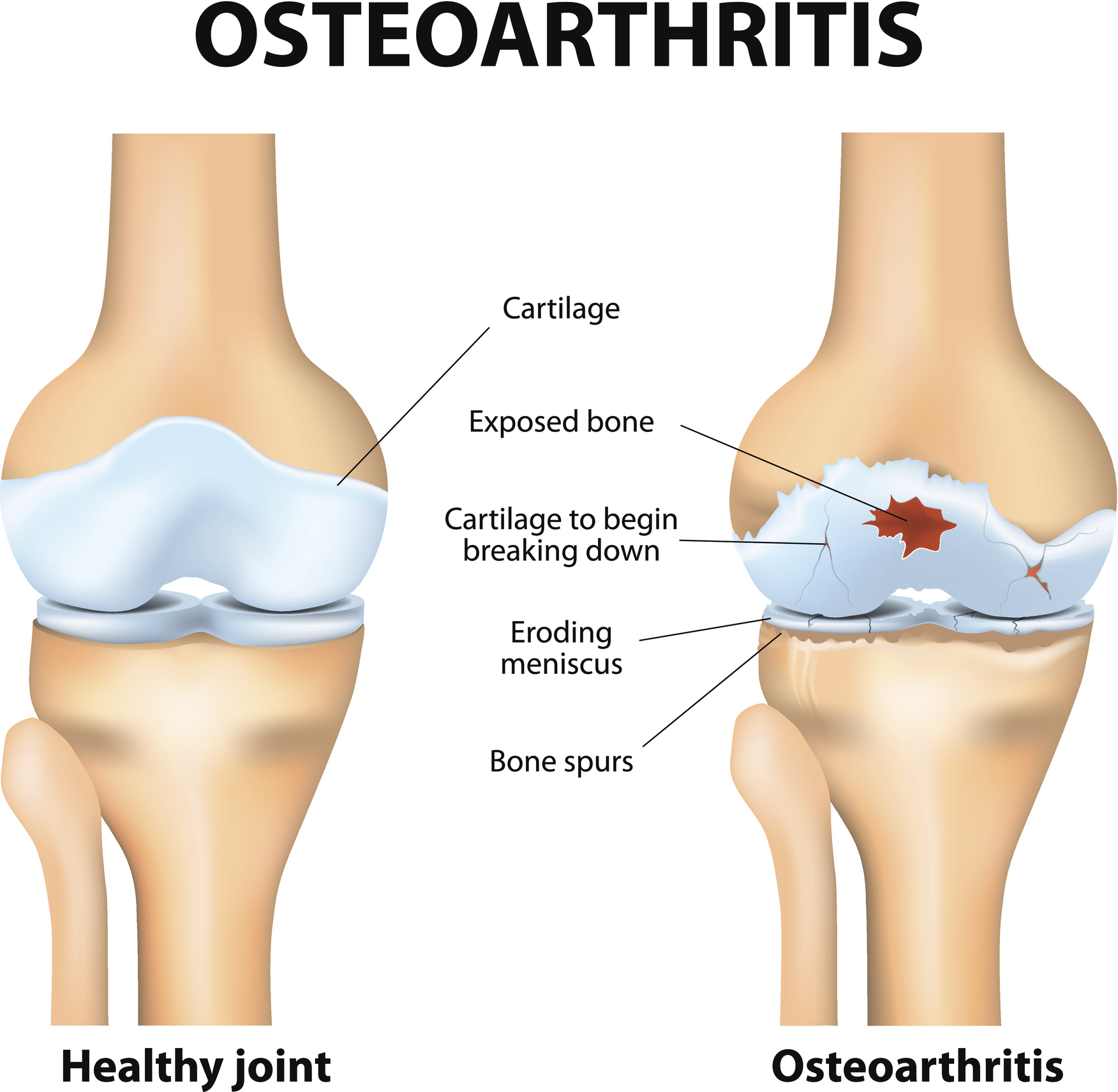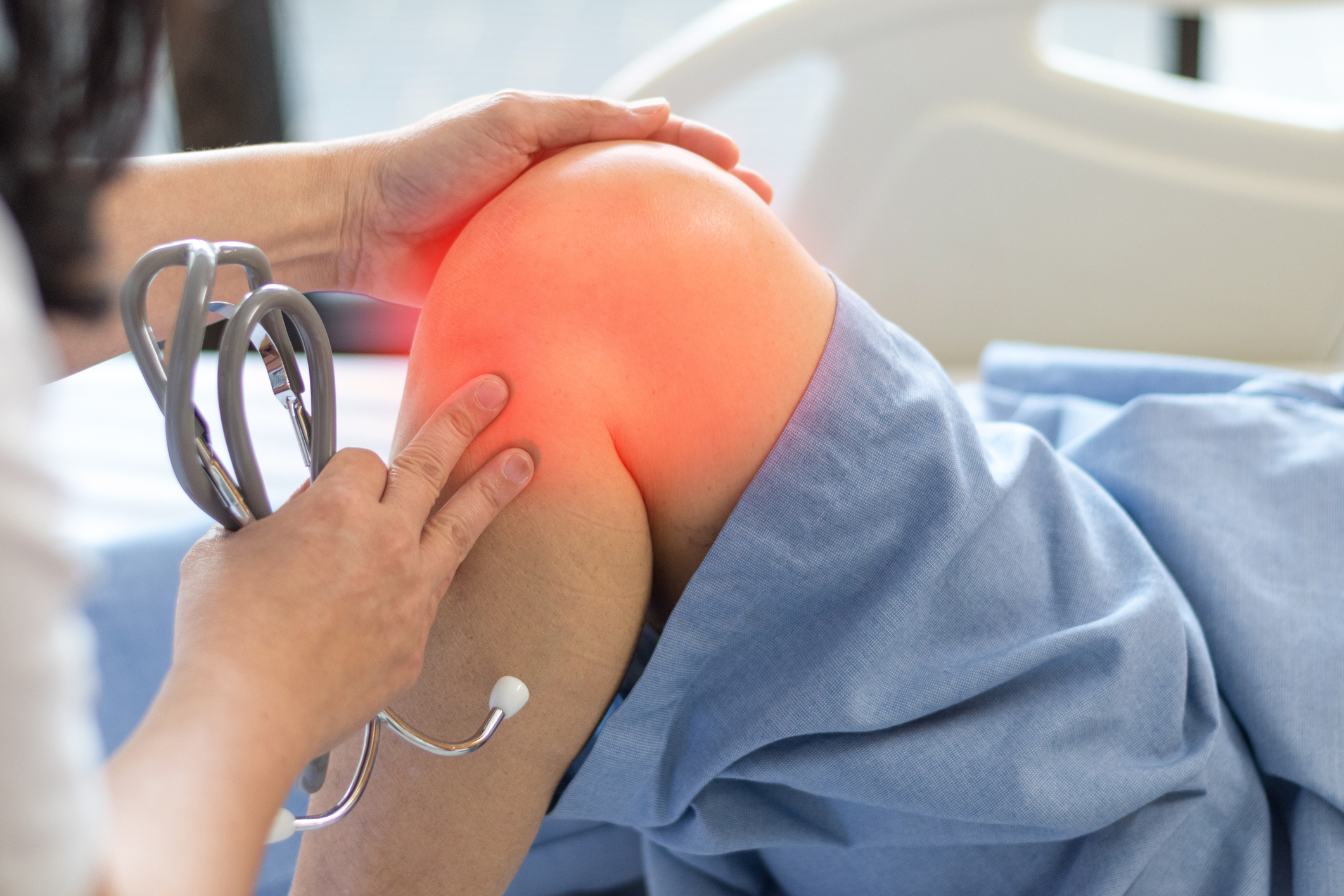Partial Knee Replacement
Partial knee replacement, also known as unicompartmental knee replacement, is a surgical treatment for knee arthritis confined to a single compartment of the knee. This minimally invasive procedure can offer significant pain relief and improved mobility for suitable candidates.

What is Partial Knee Replacement?
Partial knee replacement is a type of knee arthroplasty (joint replacement) where only the damaged compartments of the knee joint are replaced with prosthetic components. This procedure is an alternative to total knee replacement for patients with unicompartmental arthritis, where degenerative arthritis affects only one part of the knee joint.
What is Unicompartmental Knee Arthritis?
Unicompartmental osteoarthritis of the knee is a condition where degenerative arthritis affects only one compartment of the knee while the other compartments remain healthy or minimally damaged. The knee has three compartments:
- Medial compartment (inner part)
- Lateral compartment (outer part)
- Patellofemoral compartment (front of the knee between the kneecap and thighbone)


Candidates for Partial Knee Replacement
Partial knee replacement is appropriate for patients with arthritis confined to a single compartment of the knee. Ideal candidates are those who:
- Have cartilage degeneration in one section of the knee
- Are not extremely overweight (BMI greater than 40)
- Do not have severe knee stiffness or major knee deformities
- Have strong and intact knee ligaments
- Do not have rheumatoid arthritis, as it typically affects the entire joint
Preparing for Partial Knee Replacement Surgery
Before Surgery
Before the surgery, patients will have a physical exam, blood tests, and imaging tests like X-rays or MRIs. An anesthesiologist will determine the best type of anesthesia (local, regional, or general) to use during the surgery.
During Surgery
- Making an Incision: A small cut is made to reach the affected knee part.
- Removing Damaged Tissue: The surgeon removes the damaged cartilage and bone.
- Implanting Prosthetics: The surgeon fits the area with metal and plastic parts. These can be fixed with or without cement.
- Closing the Incision: The cut is closed, and the knee structures are put back in place.
Recovery Timeline
- Most people can resume daily activities within 3 to 6 weeks.
- Return to sports like golf or tennis within 6 to 10 weeks.
- Full recovery may take several months, depending on the individual and the surgery details.
Pain Management
Pain after surgery is managed with prescribed pain medications, anti-inflammatory drugs, and acetaminophen. It’s important to follow the doctor’s instructions to manage pain effectively and avoid complications.
Rehabilitation
Physical therapy starts right after surgery to restore knee movement and strength. Exercises are designed to help regain knee function and improve recovery.
Risks / Benefits
Benefits
- Faster recovery
- Less pain after surgery
- Less blood loss
- Lower risk of infection and blood clots
- The knee feels more natural compared to total knee replacement
Risks
- Future surgery might be needed if arthritis develops in other parts of the knee
- Possible complications include blood clots, infection, nerve or blood vessel injury, continued pain, and stiffness
Frequently Asked Questions
Q: What is the difference between partial and total knee replacement?
A: Partial knee replacement only replaces the damaged parts of the knee, whereas total knee replacement replaces all three parts. Partial knee replacement is less invasive and usually has a faster recovery time.
Q: How long does a partial knee replacement last?
A: Partial knee replacements can last 10 years or more. How long it lasts depends on how active you are, your overall health, and the quality of the implant.
Q: Is a partial knee replacement painful?
A: All surgeries come with some pain. However, patients usually feel less pain and stiffness after partial knee replacement compared to total knee replacement. Doctors use effective pain management strategies to minimize discomfort.
Q: Can you return to sports after partial knee replacement?
A: Many people can return to sports like biking, golf, tennis, and skiing after they recover. However, high-impact activities might need to be avoided to help the prosthetic last longer.
Q: What are the disadvantages of partial knee replacement?
A: The main drawback is that you might need another surgery if arthritis develops in other parts of the knee. Also, partial knee replacements might need to be revised (replaced) slightly more often than total knee replacements.
Doctors That Offer Partial Knee Replacement
Hear What Our Patients Have to Say




Had my right hip replaced by Dr Jeffrey, and couldn't be happier with the job he did and the treatment I received. Been a few years and went in for a yearly checkup and everything is great! Great doctor and office staff!

My two partial knee replacements changed my life. I feel very respected and cared for at this practice. Everyone is very professional and explains things very conscientiously.

He was very nice explained everything and showed pictures of what he wants to do with my right knee felt comfortable with him and he has a great smile.





